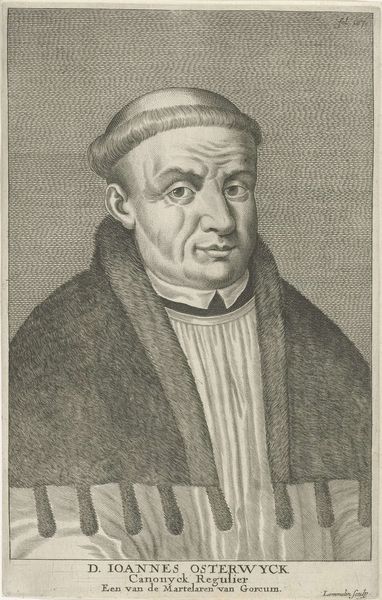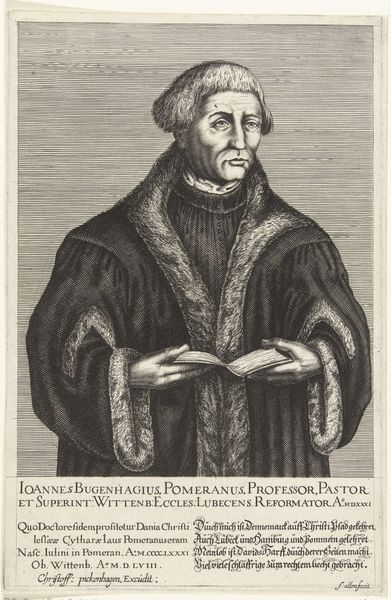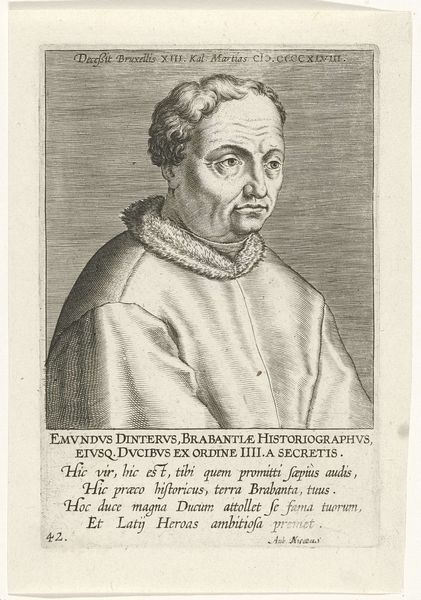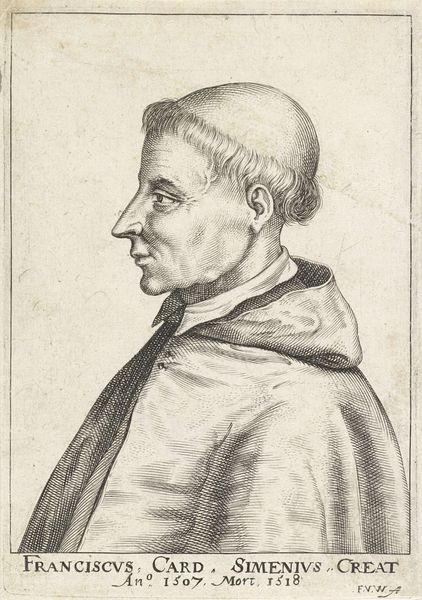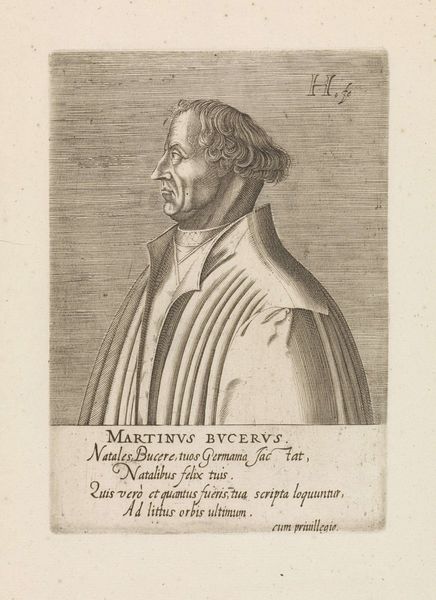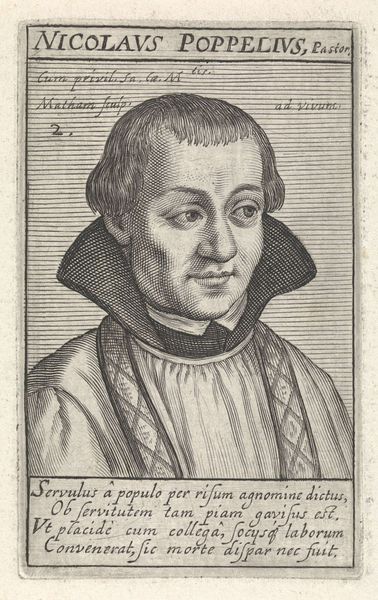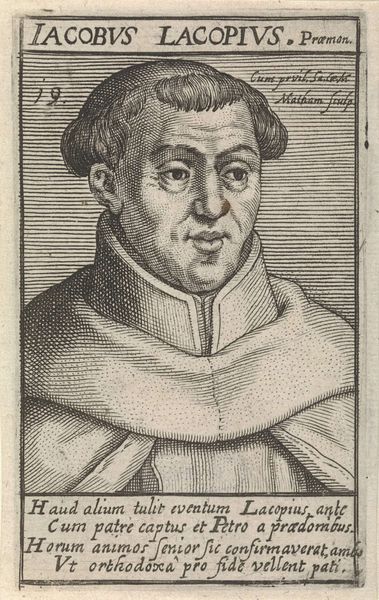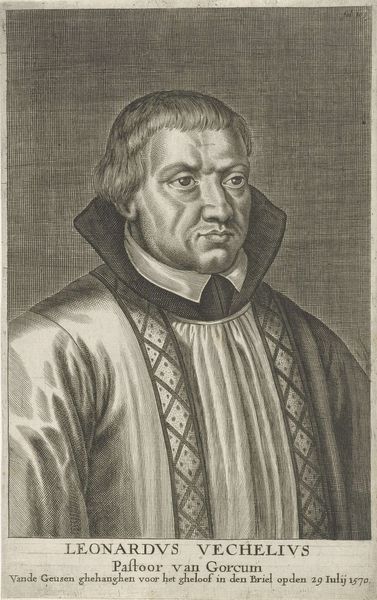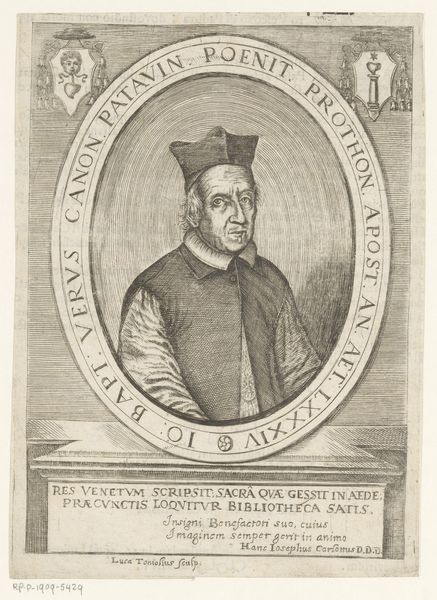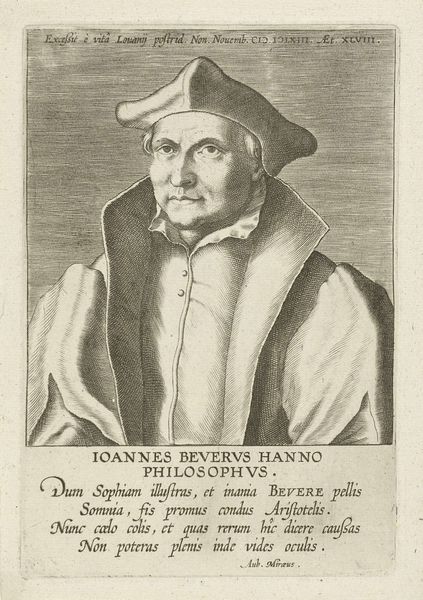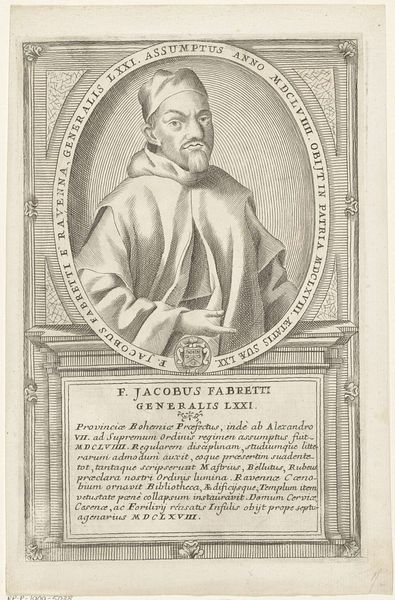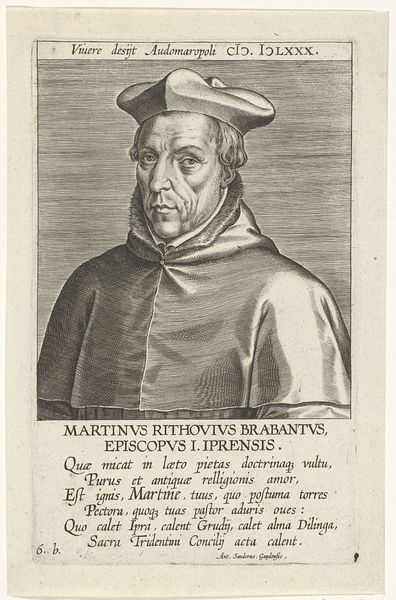
print, engraving
#
portrait
# print
#
old engraving style
#
figuration
#
portrait drawing
#
northern-renaissance
#
engraving
Dimensions: height 171 mm, width 118 mm
Copyright: Rijks Museum: Open Domain
Curator: Here we have Philips Galle's "Portret van Beatus Bild," dating roughly from 1587 to 1606, an engraving currently housed in the Rijksmuseum. Editor: My immediate impression is of austere intellect, almost stoic. The tight hatching creates a density, a weightiness, that suggests profound seriousness. Curator: Absolutely. Galle's masterful use of line here isn’t just descriptive, it’s structural. See how the varying density articulates form and directs our eye. It’s almost sculptural in its effect. The controlled use of line dictates the structure and form in such subtle gradients. Editor: It also reminds me of illuminated manuscripts, specifically with Beatus Bild, the man represented in the print, holding a closed book, suggesting knowledge withheld, or at least, knowledge requiring careful interpretation. It evokes a whole tradition of scholarly inquiry. The severe lines of the mouth, the precise collar. He is clearly a man who has read many a heavy tome. Curator: Precisely! Galle gives us access to the psychology of the subject through the calculated arrangement of forms. The face, rendered with such precise detail, stands out against the softer folds of his clothing, a distinction achieved entirely through the manipulation of light and shadow. Editor: Beyond Bild as a scholar, I also detect humanist aspirations in his bearing, reminiscent of Erasmus in certain ways: the emphasis on learned piety, perhaps, or on inner reflection. Curator: The cultural symbolism certainly enriches our experience. Galle wasn't merely reproducing a likeness; he was constructing an image that conveys very specific ideas about intellect, authority, and the humanist ideal of wisdom and erudition, all embedded in a series of lines, marks and visual symbols. Editor: It's interesting to see how printmaking allows these ideas to be spread through images and text, reinforcing certain social and intellectual ideals with wide circulation and reach. It really helps one think about the intellectual and cultural atmosphere in sixteenth-century Europe. Curator: Examining Galle’s method, considering its distribution: the more layers we consider, the deeper the appreciation. It underscores how technique alone carries so many important signifiers. Editor: Yes, indeed. This small print carries within it a whole world.
Comments
No comments
Be the first to comment and join the conversation on the ultimate creative platform.

